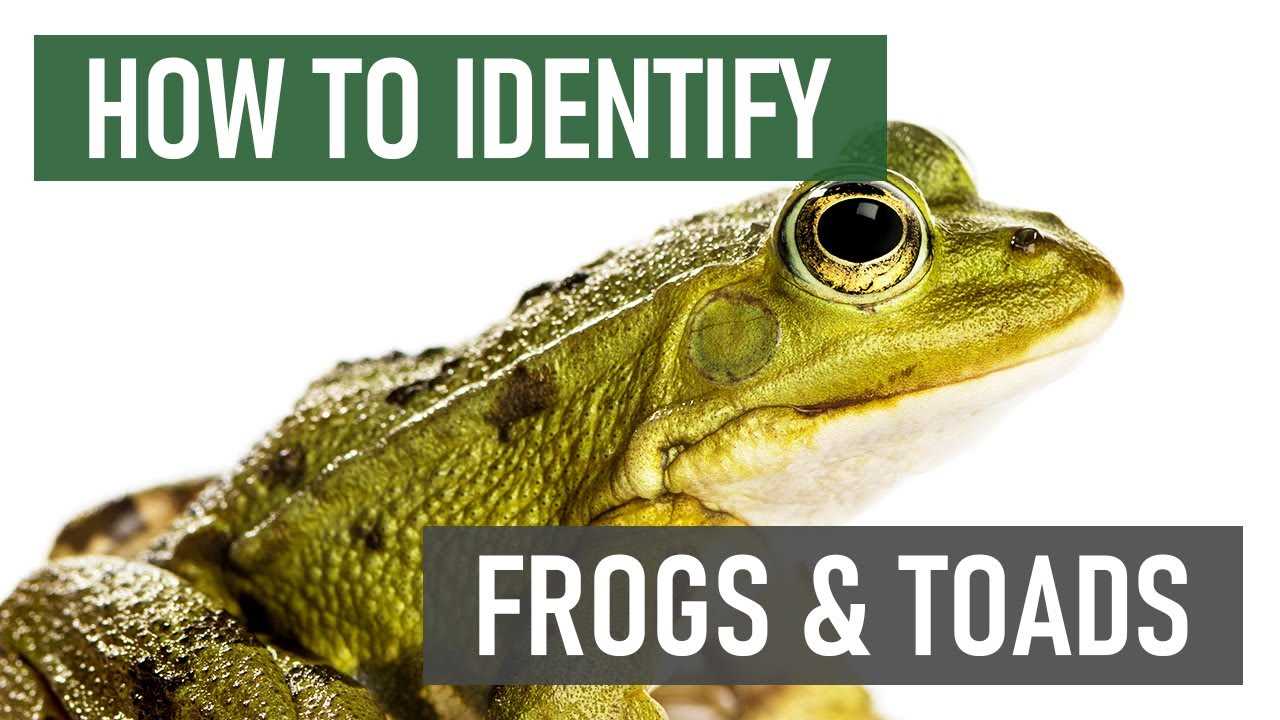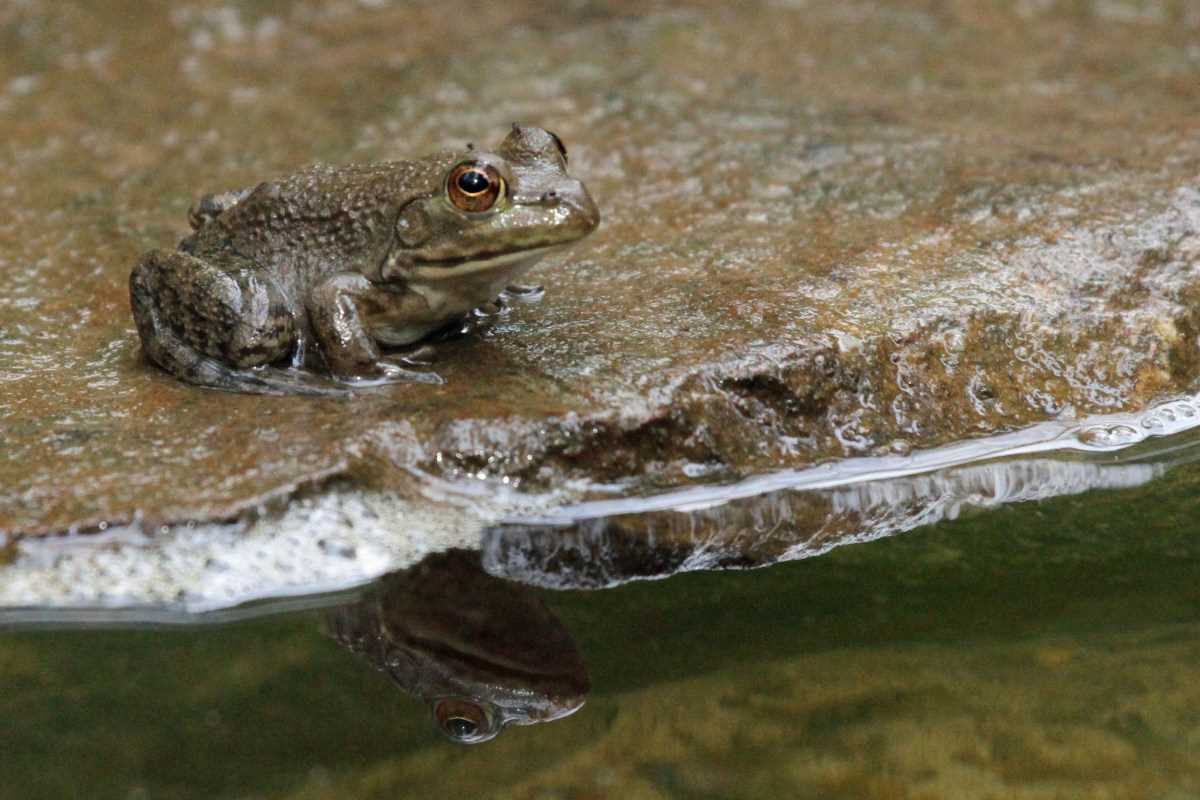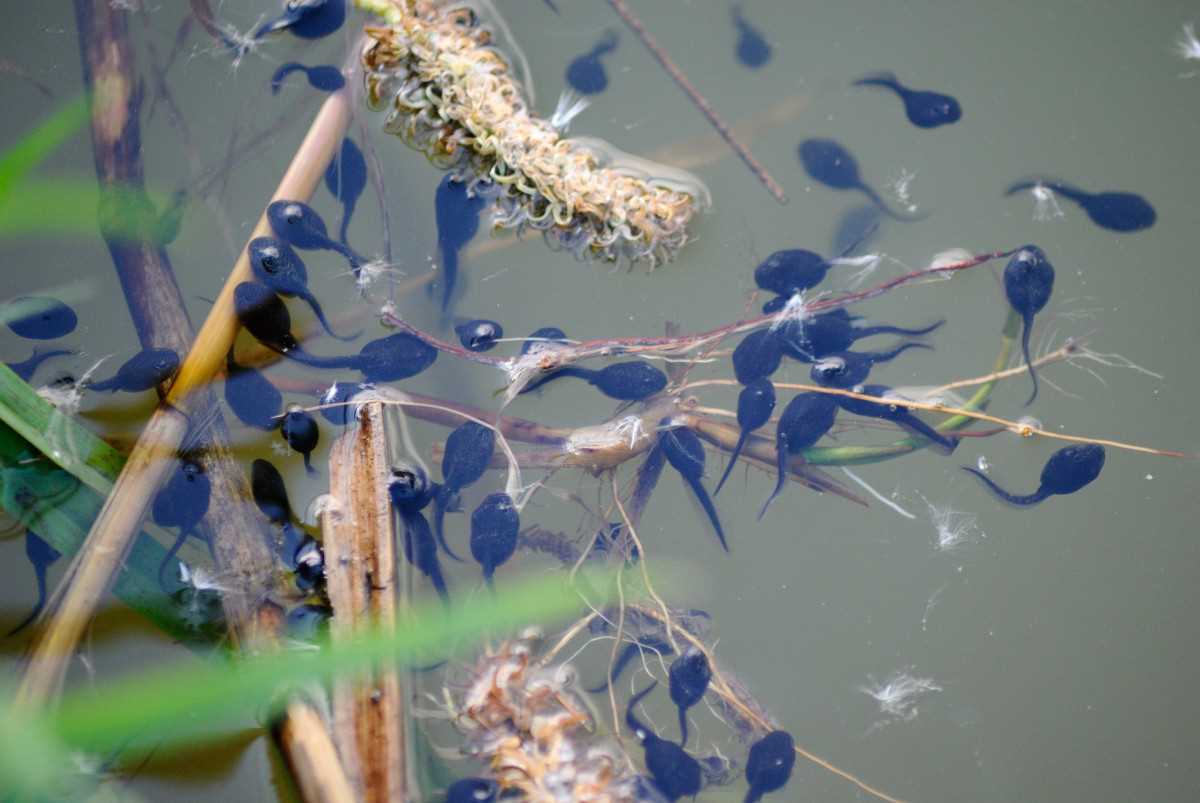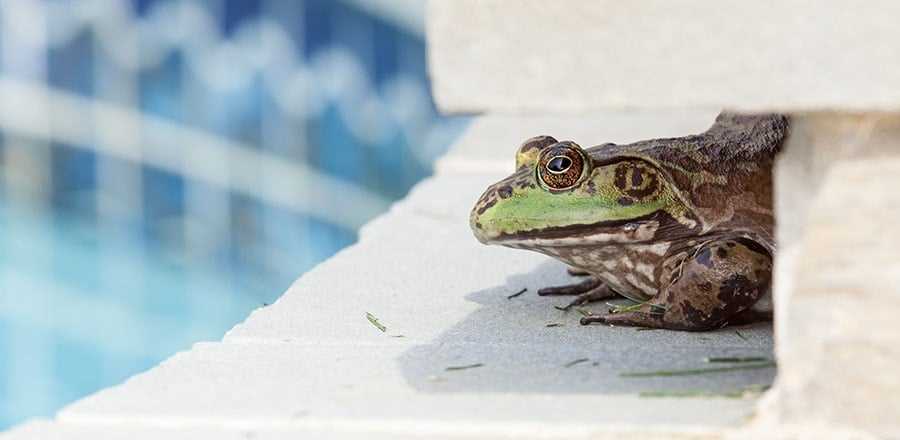Do you have frogs in your pond and want to get rid of them? While frogs can bring a sense of tranquility to your outdoor space with their soothing croaks, they can become a nuisance when their population grows rapidly. If you’re wondering how to remove frogs from your pond, we’ve got you covered with this complete guide.
1. Modify the habitat: One of the most effective ways to discourage frogs from inhabiting your pond is to alter their habitat. Frogs love places with plenty of vegetation, so reducing the density of the plants and removing any floating debris can make your pond less appealing to them.
2. Install a frog barrier: If modifying the habitat doesn’t provide the desired results, consider installing a frog barrier. These barriers are typically made of fine mesh or wire fencing that prevents frogs from entering your pond. Make sure to place the barrier deep enough into the ground to prevent frogs from burrowing underneath it.
3. Use frog repellents: To deter frogs from your pond, you can try using natural or commercial frog repellents. Natural repellents include vinegar, garlic water, or citrus sprays, which can be sprayed around the pond perimeter. Commercial repellents are also available and are specifically designed to repel frogs without harming them.
5. Capture and relocate: If all else fails and you still have an overwhelming number of frogs in your pond, you may need to consider capturing and relocating them. Use a net or a frog trap to catch the frogs safely, and then relocate them to a suitable habitat far away from your pond.
By implementing one or a combination of these methods, you can effectively remove frogs from your pond and restore its tranquility without causing harm to these amphibious creatures.
Reasons Why You Might Want to Remove Frogs from Your Pond
If you have a pond in your backyard, you may enjoy the sight and sound of frogs. However, there are situations where you might want to rid your pond of frogs. Here are several reasons why you may consider removing frogs from your pond:
1. Maintenance

Frogs can contribute to the accumulation of debris and algae in your pond. This can make it difficult to maintain and keep the water clean. Additionally, frogs excrete waste that can further add to the build-up of organic matter in the pond.
2. Predation
3. Noise
While some people enjoy the soothing sound of frogs croaking at night, others may find it disturbing, especially if the noise becomes excessive. If the noise from the frogs in your pond is causing discomfort or disrupting your sleep, you may want to find ways to reduce or eliminate it.
4. Health and Safety
In some cases, frogs can carry diseases and parasites that can be harmful to humans and pets. If you have young children or pets that frequently come into contact with the water in your pond, removing frogs can help minimize the risk of infections or illnesses.
Identifying Common Frog Species Found in Ponds
By familiarizing yourself with the different frog species that may inhabit your pond, you can better understand their role in the ecosystem and make informed decisions on how to manage their presence.
The Benefits of Frogs in a Pond

Potential Issues Caused by Frogs
Another potential issue is the introduction of diseases. Frogs can carry a variety of diseases and parasites that can be harmful to other aquatic animals. If the frog population becomes overcrowded, the risk of disease transmission increases. This can have a detrimental effect on the health of your pond’s ecosystem.
Managing Frog Populations
If you find that the frog population in your pond is causing problems, there are several strategies you can employ to manage their numbers. One option is to use non-lethal methods of removal, such as installing barriers or creating alternative habitats. These methods can help to encourage frogs to relocate without causing them harm.
In some cases, chemical methods may be necessary to rid your pond of frogs. However, these should be used as a last resort and only under the guidance of a professional. Chemical methods can be harmful to other organisms in your pond and should be used with caution.
Non-Lethal Methods for Removing Frogs from Your Pond
1. Capture and Release

One way to get frogs out of your pond is to physically capture them and release them somewhere else. This can be done by hand or using a small net. Be gentle with the frogs to avoid injuring them, and make sure to release them in a suitable habitat, away from your pond.
2. Create a Frog Barrier
Another method is to create a barrier around your pond to prevent frogs from entering. This can be done by installing a fence or using a netting material that is tight enough to keep frogs out. Be sure to secure the barrier well so that frogs cannot sneak through any gaps.
| Pros of Non-Lethal Methods | Cons of Non-Lethal Methods |
|---|---|
| – Allows frogs to live without harm | – Requires manual effort to apply the methods |
| – Maintains the ecosystem balance | – May not completely eliminate the frog population |
| – Safe for other pond organisms | – May require ongoing maintenance |
3. Adjust Habitat Conditions
Frogs are attracted to ponds that provide suitable conditions for them to thrive, such as abundant food and shelter. By modifying the habitat, you can discourage frogs from inhabiting your pond. You can reduce the amount of vegetation around your pond, remove potential hiding spots, and minimize the available food sources for frogs.
Creating a Frog-Friendly Habitat Away from Your Pond
If you have a pond and want to get rid of frogs, one effective solution is to create a frog-friendly habitat away from your pond. This not only helps in removing frogs from your pond but also provides them with an alternative place to live.
Here are some steps to create a frog-friendly habitat away from your pond:
- Create a small wetland: Dig a shallow depression or a small pond-like structure in the chosen area. This will mimic the natural habitats of frogs and attract them away from your pond.
- Add water: Fill the depression or pond-like structure with water. You can use rainwater, tap water, or collect water from your pond. This will create a suitable aquatic environment for frogs.
- Create hiding spots: Place rocks, logs, and other natural materials to create hiding spots for the frogs. These hiding spots will provide them with protection from predators and harsh weather.
By creating a frog-friendly habitat away from your pond, you are providing an alternative home for frogs and encouraging them to relocate. This method is humane and allows you to maintain a frog-free pond while still considering the ecological impact of removing frogs from their natural habitat.
Using Physical Barriers to Prevent Frogs from Returning to Your Pond
If you have a pond and want to get rid of frogs, using physical barriers can be an effective method. By preventing the frogs from accessing your pond, you can keep them away and maintain a frog-free environment. Here are some ways to use physical barriers to deter frogs from returning to your pond:
1. Install a Fence: Surrounding your pond with a fence can create a physical barrier that frogs cannot cross. Make sure the fence is tall enough to prevent the frogs from jumping over it. You can use materials like mesh or chicken wire to create a barrier.
2. Add a Pond Cover: Covering your pond with a net or mesh can physically block the frogs from entering. Make sure the cover is securely fastened to prevent any gaps where frogs can sneak through.
3. Use Rocks or Gravel: Placing rocks or gravel around the edge of your pond can create an uneven surface that frogs find difficult to navigate. The rough texture and unstable footing can discourage frogs from approaching the pond.
4. Build a Brick Wall: Constructing a low brick wall around your pond can act as a physical barrier. Frogs are less likely to climb over a solid wall compared to fences or netting.
5. Dig a Trench: Digging a shallow trench around the perimeter of your pond can create a physical barrier that frogs cannot easily cross. Make sure the trench is deep enough to prevent the frogs from simply hopping over it.
Chemical Methods for Removing Frogs from Your Pond

1. Chemical repellents
One option is to use chemical repellents that make the pond environment less attractive to frogs. These repellents often contain substances that emit strong odors or taste bad to frogs, deterring them from staying in the pond. However, it is essential to choose a repellent that is safe for both the frogs and the other aquatic life in your pond.
2. Chemical barriers
Another approach is to create a chemical barrier around your pond that prevents frogs from entering. This can be achieved by applying a chemical substance to the perimeter of the pond or by creating a diluted solution that is sprayed on the vegetation and soil surrounding the pond. The chemicals used for this purpose typically act as irritants to frogs, making them reluctant to cross the treated area.
3. Chemical removal
In some cases, if the frog population in your pond is overwhelming and causing significant ecological imbalance, you may consider using chemical methods to remove the frogs entirely. There are certain chemicals available that, when applied to the water, can be lethal to frogs. However, this method should only be used as a last resort and with extreme caution, as it can harm other aquatic species and disrupt the natural balance of your pond.
Seeking Professional Help to Rid Your Pond of Frogs
If you have tried various methods to remove frogs from your pond without success, it may be time to seek professional help. Professional frog removal services have the expertise and knowledge to effectively rid your pond of these amphibians.
A professional frog removal service can assess the situation and determine the best course of action for your specific pond. They have access to specialized equipment and techniques that can safely and efficiently remove frogs from your pond without causing harm to the environment or other wildlife.
Professional frog removal services can also provide ongoing maintenance and prevention strategies to ensure that your pond remains frog-free in the future. They can offer advice on how to create a habitat that is less attractive to frogs and implement strategies to deter them from returning.
How to Get Rid of Pond Frogs
If you have a pond on your property, you may be familiar with the nuisance that pond frogs can be. While frogs can provide some benefits to your pond ecosystem, such as controlling insect populations, they can also cause damage and disrupt the balance of the ecosystem. If you find yourself dealing with a frog invasion in your pond, here are some steps you can take to get rid of them and maintain a frog-free pond.
1. Remove Attractive Features: Start by making your pond less attractive to frogs. Remove any excess vegetation and debris that may provide hiding spots or breeding grounds for frogs.
2. Limit Food Availability: Frogs are attracted to ponds with an abundance of insects and other small prey. Implement measures to control the insects in and around your pond, such as using insect-repelling plants or installing a pond net to prevent insects from entering the water.
3. Install a Pond Fence: Physical barriers can be an effective way to prevent frogs from entering your pond. Install a fence around the perimeter of your pond, making sure to bury it at least a few inches into the ground to prevent frogs from burrowing underneath.
4. Use Deterrents: There are several natural deterrents that can be used to repel frogs from your pond. These include spraying the perimeter of the pond with a solution of vinegar and water, sprinkling cayenne pepper or garlic powder around the pond, or placing predator decoys, such as snakes or herons, near the pond.
5. Reduce Water Availability: Frogs rely on water to survive, so reducing the amount of available water can discourage them from staying in your pond. Consider draining a portion of your pond or installing a pond aerator to create less favorable conditions for frogs.
6. Utilize Frog Traps: If the above methods are not effective, you may need to resort to trapping the frogs. There are various types of traps available, such as funnel traps or pitfall traps, which can be baited with food or frog-attracting scents.
7. Seek Professional Assistance: If you are unable to control the frog population in your pond on your own, it may be necessary to seek professional help. Pest control companies or wildlife management experts can provide expert advice and assistance in removing frogs and maintaining a frog-free pond.
By following these steps, you can effectively get rid of pond frogs and maintain a healthy and balanced pond ecosystem. Remember to always consider the ecological impact of your actions and opt for non-lethal methods whenever possible.

I’m Lena Adams—a product of an unconventional upbringing in the African wilderness. My father, a daring explorer of African wildlife, sparked my fascination with reptiles, a passion that intertwined with the tragic loss of my mother during an expedition, leaving an indelible mark on my life. Driven to understand the creatures that captivated my parents, I embarked on my journey, sharing insights about reptiles, frogs, and lizards on my website. Through my explorations and conservation efforts, I honour my family’s legacy while seeking connections—to the creatures, nature, and the mother whose presence I yearn to understand.
